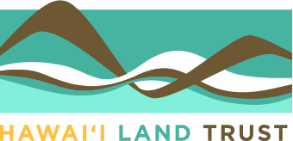Lāʻau Love: Celebrating Native Hawaiian Plant Month
In early 2020, the month of April was designated Native Hawaiian Plant Month in Hawaiʻi, recognizing the diversity and biocultural value of roughly 1,400 native plant species.
Native plants refer to plants that came to Hawaiʻi without the assistance of people. Canoe plants are plants that were brought over by the migrating Polynesians. Both native and canoe plants have been used for food, medicines, tools, and more throughout history, which today leads to some confusion as to what was brought here and what was already here. Some of these canoe plants include milo, kalo, niu, and kukui! These plants are interwoven into Native Hawaiian traditions, which is why some experts call them native as well.
Out of the estimated 1,400 native plants, nearly 90% are endemic - meaning they are only found in Hawaiʻi. The isolation of the Hawaiian Island chain has allowed these plants to thrive in their own unique way. Sadly, more than 200 of endemic Hawaiʻi species have 50 or fewer plants remaining.
Through efforts by conservation organizations like HILT, County environmental departments, and the State’s Plant Extinction Prevention Program (PEPP), a collaboration of the DLNR Division of Forestry and Wildlife (DOFAW), University of Hawaiʻi, and the U.S. Fish and Wildlife Service, we are celebrating some native plant successes!
Several plant species previously thought extinct were rediscovered through field surveys last year. Rappelling botanists found a small shrub, Silene lanceolata, in Waimea Canyon on Kauaʻi. On Maui, a sedge known as Cyperus prescottianus had not been seen for more than 100 years, but was rediscovered along a stream bank.
Other species that have been present in low numbers saw their populations rebound over the past year, with staff either transplanting seedlings or finding new individuals that germinated on their own. Rebounding species included three extremely rare Cyanea species, found respectively on Kauaʻi, Molokaʻi, and Hawaiʻi Island, the coastal shrub naupaka papa on Molokaʻi, and uhiuhi on Lānaʻi.
What Can You Do?
Here are some ways you can support native plants and create healthy ecosystems.
Go Native!
If you are thinking about planting, gardening, or landscaping at your home, check out Plant Pono to make sure that the plants you choose are not invasive. This awesome resource is the result of a partnership between the Hawaii Invasive Species Council, the Coordinating Group on Alien Pest Species (CGAPS), and the Hawai‘i Biological Information Network, with advice and participation from the Landscape Industry Council of Hawai‘i and its member associations.
The website allows you to make good decisions about the plants you choose. Sadly, Hawaiʻi does not have laws restricting the sale of invasive plants, so many stores and nurseries sell plants that are highly invasive, meaning they can easily spread to natural areas where they replace native plants. Educate yourself before you shop!
Native plants often use less water than other plants and are best suited for our islands. Removing native plants from the wild can be very harmful, but luckily they are also increasingly easy to find! Check out botanical gardens, nurseries, and plant shops and programs for native plants. Our friends at Hui Ku Maoli Ola sell native plants in most Home Depot stores, or you can visit their nursery in Kāneʻohe. Check out their website for in depth and humorous descriptions to help make your plant choice easier. And on Maui, we’ve heard that Maui Nui Botanical Garden has some of the best plant sales!
E Malama Aina!
There are plenty of opportunities to get out and be part of the solution. Join HILT for any of our monthly volunteer days at our community preserves on Kauaʻi, Maui, and Oʻahu, or find another conservation nonprofit near you and look for opportunities to remove invasive species like strawberry guava, miconia, kahili ginger, and clydemia.
When you’re hiking, be sure to STAY ON TRAIL!! Going off trail increases the chances of spreading invasives into our native forests and could spread the devastating Rapid ʻŌhiʻa Death (ROD), and when you’re done hiking, clean your shoes and gear before you hike again.
Learn more about our native plants!
The more you know about our native plants and ecosystems the better equipped you are! Ask a local expert - our ʻāina stewards are always happy to chat with you about their favorite subject, native plants, or visit the Hawaiian Ethnobotany Online Database or the University of Hawaiʻi’s Native Plants Hawaii website.
